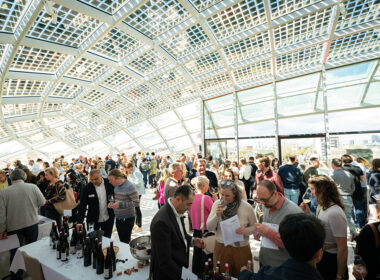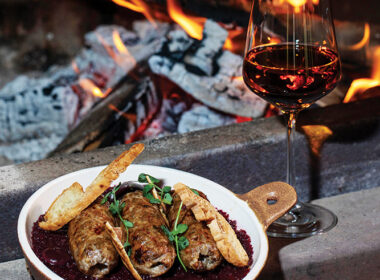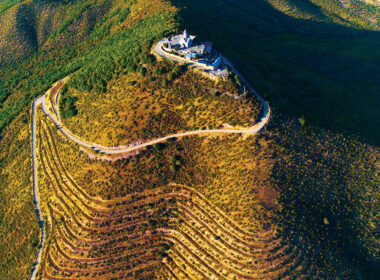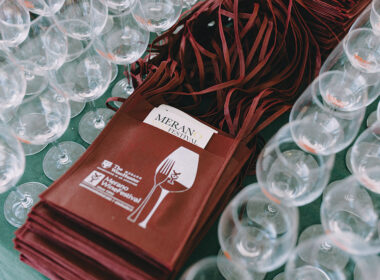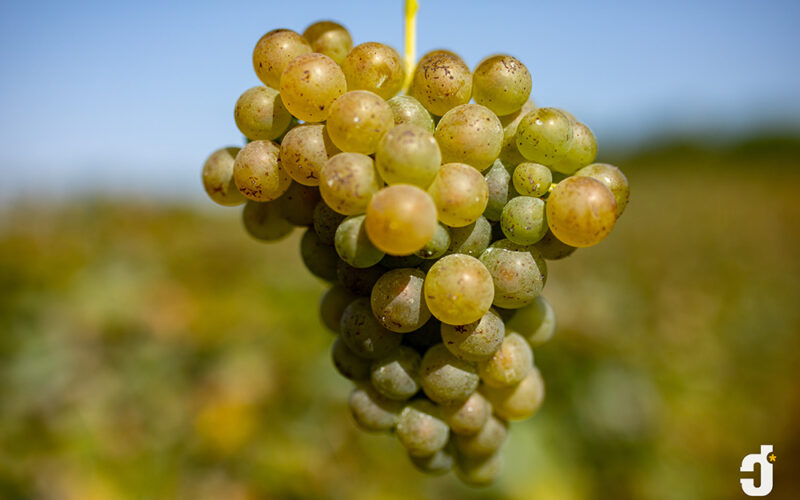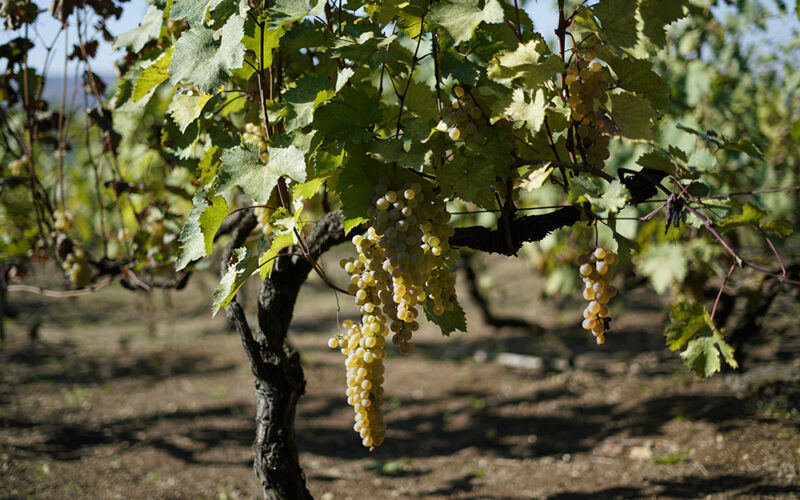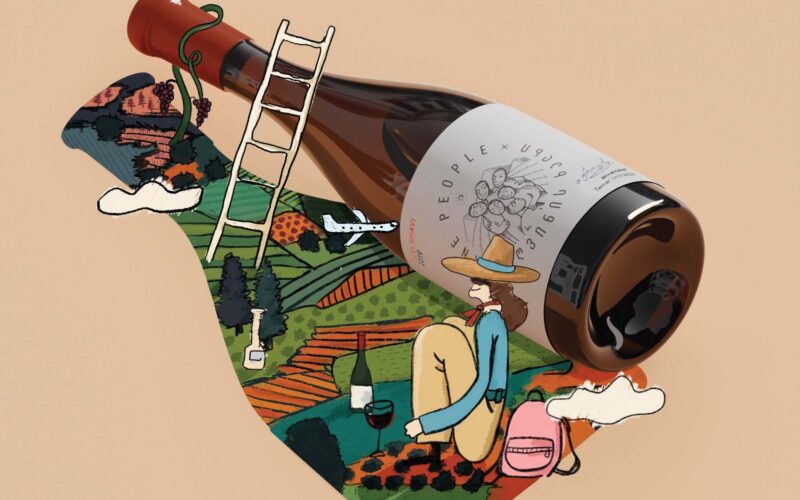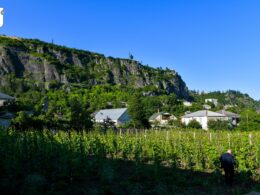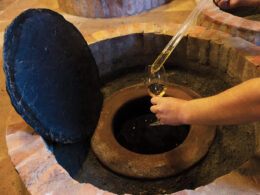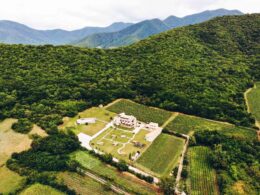Zviad Shalamberidze | State Representative in Imereti: Geographical location of the Imereti region, its landscapes, historical, cultural, and natural monuments, and traditional hospitality are a great base for regional tourism development. Tourism is one of our main strategic focuses, and we strive to align our mission with the resource available in the region.
Various types of discovery and adventure tourism are available in Imereti, such as mountaineering, hiking, mountain riding, speleological tourism, and rafting on the Rioni river. Ecotourism has a lot of potential in the region as well. Agritourism is on the rise, with a lot of attention dedicated to local varieties and wines, which are tourist products in themselves.
We realize that wineries and people involved in the industry need support and motivation. We have already implemented a lot of projects over the past several years. One of the most notable ones is the Wine Route, where we identified, evaluated, and involved a lot of wineries in the region. All participants were allowed to develop family wineries. In our efforts to support winemakers, we restored roads leading to 14 wineries of Baghdati with financing from the European Union. This will further help to attract additional visitors and tourists.
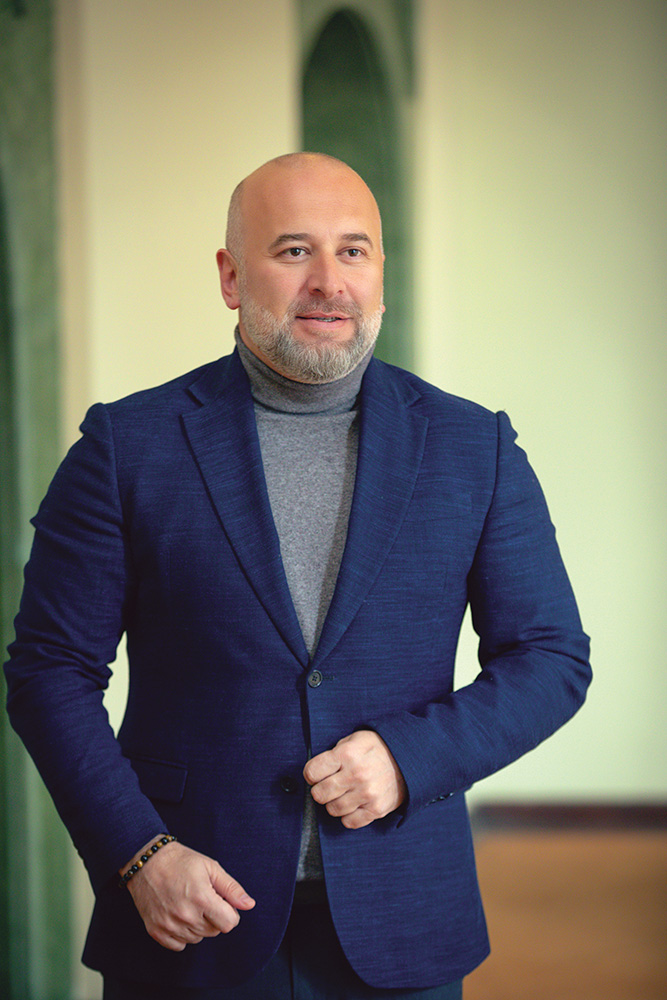
“Imeretian Wine Association” is a recent addition to the region. The main mission of the organization is the promotion and support of Imeretian Wine, quality control, and improvement.
Regional Office of Tourism has been implementing lots of educational and promotional activities with our direct involvement and support, such as trainings, competitions, info-tours, and many more. As a result, Imeretian wine appeared on the Georgian winemaking map. This is just the beginning. I am sure that, all our efforts will lead Imeretian wines to become more recognizable within the country and abroad.
Keti Jurkhadze | Director of Imeretian Wine Association: the association was established a year ago and already unites up to 70 member wineries. We achieved several important milestones in a year, including a project to open one of the wine laboratories in Imereti. This will allow the wineries to get all necessary services on the spot, without traveling to the capital. The project is now being implemented; we are planning to purchase all the necessary equipment in 2023. The laboratory will aid in the further improvement of Imeretian wine.
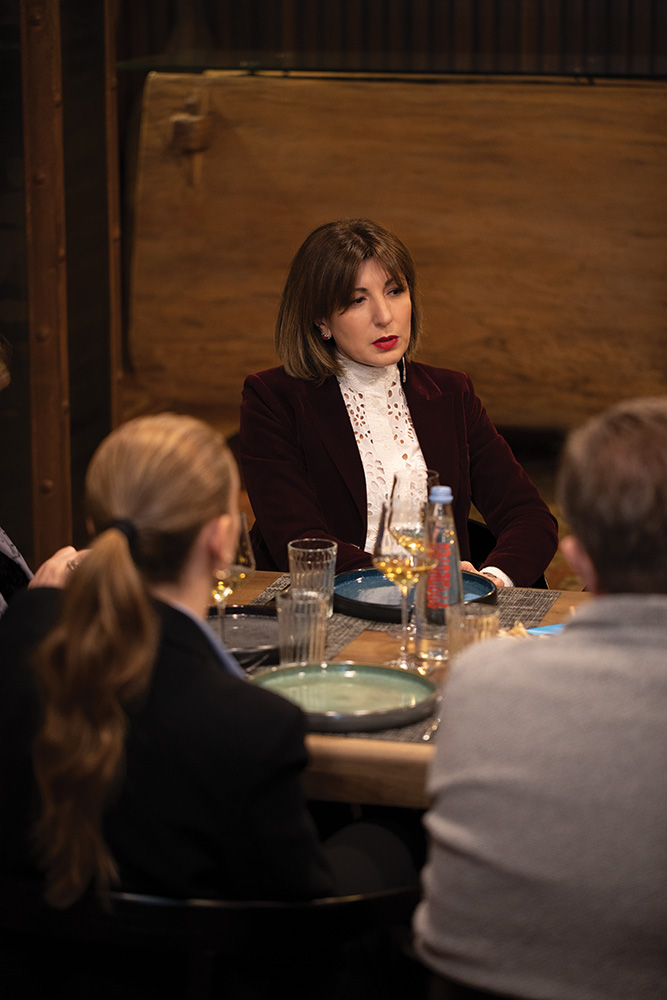
This year’s plans of the association include visits of wine buyers from different countries to Imereti, more attention to export, participation in international exhibitions, and promotion of regional wines. One of these is the wine exhibition planned for March 8-9 in New York, where our association will present Imeretian winemakers and the best Imeretian wines.
Irma Mdinaradze | Agriculture Ph.D., Associate professor, Chief Specialist, Viticulture analysis and regulation department, LEPL National Wine Agency: Historically, Imereti has always been one of the leading regions in terms of vineyard area, winemaking technologies, and varietal diversity. Out of the 525 varieties described in the Georgian Ampelography (N. Ketskhoveli, M. Ramishvili, D. Tabidze, 1960), Imereti holds second place and is only slightly behind Kakheti.
We have many historical sources about the varieties and wines of the region. According to Vakhushti Bagrationi: “The wines are abundant and good”. Imeretian wines (Okribuli) were also described as “tangy wines”. Sulkhan-Saba Orbeliani writes: “The wine that is equally acidic and sweet is called “tangy”.
In the middle of the 17th century, during the expansion of Turkey, when our country experienced certain setbacks, Imereti still held a prominent place, and as the records show, there was “wine and grapes in abundance”.
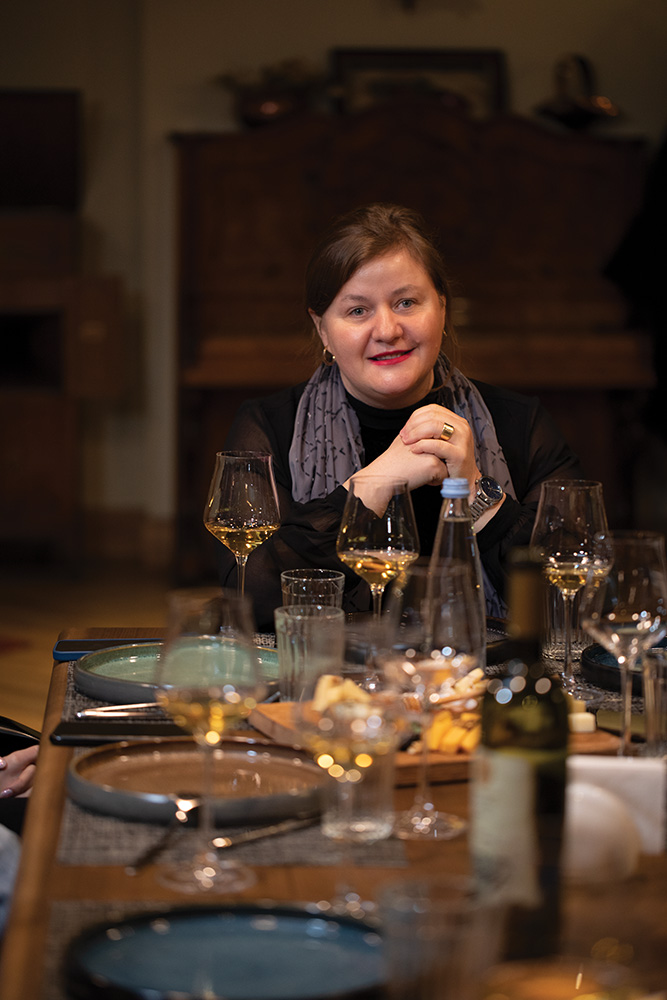
There are several leading varieties in Imereti, one of them being Tsolikouri. This variety can grow not only in this region but throughout the whole of West Georgia, thanks to its high resistance to diseases and pests, as well as its ability to adapt to the environment. I think this variety will perform well, under the global warming conditions.”
Mariam Khomasuridze | Founder of the Wine Guild, GTU Professor, Oenologist: What we need today is wine based on experience, but made for the future, made using modern technologies, with traditions in mind. Rosé wines are best in this regard – attractive, light, thin-bodied, and tangy. Some of the best red grape varieties come from Imereti, including Rko Shavi, Mgaloblishvili, Dzelshavi, Aladasturi, and they have the potential to become world-quality rosé wines. Especially, because Georgia has had the tradition of making “tangy” wines since the beginning of time.
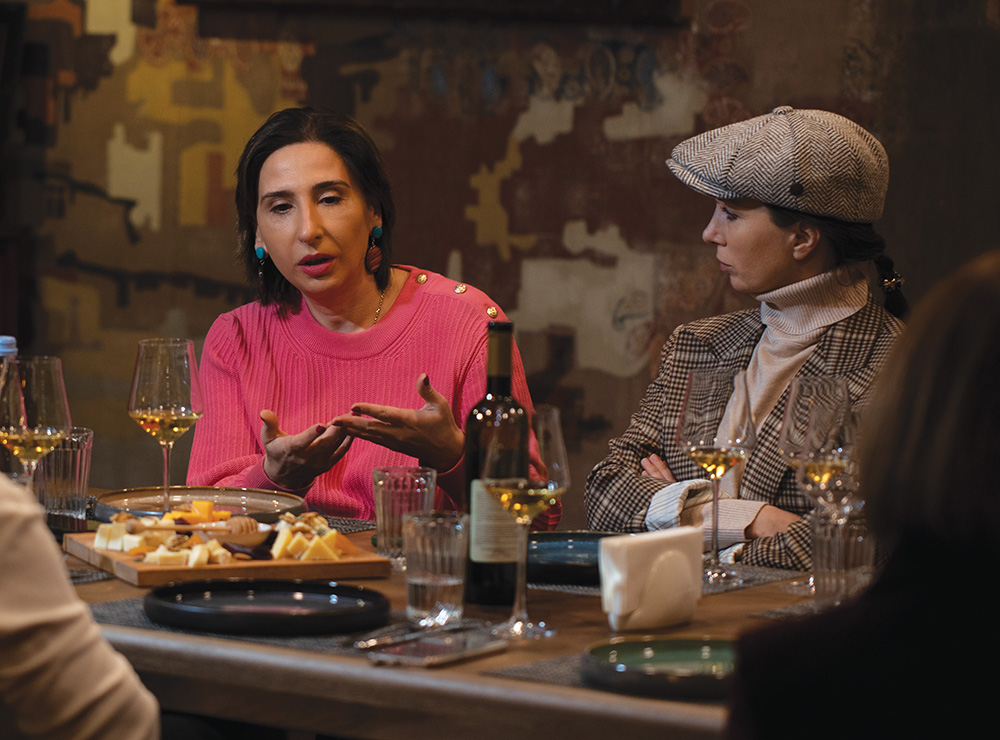
Irma Mdinaradze: There are many words for “tangy” in Georgian. “Mkhe”, “marakhoshi”. The first one means “sweet and sour”, and the second one denotes all acidic wines, including sparkling ones.
Baia Abuladze | Baia’s Wine: The rosé wine was one of the interesting innovations that allowed us to enrich our portfolio with two additional types (Aladasturi rosé and Otskhanuri Sapere rosé wines). The first year was challenging because we didn’t have a proper press and we got more of a thinner red wine, rather than a rosé. Nevertheless, it was interesting with its cheerful acidity and fruity flavors.
We have been producing rosé wines for the fourth year now and they are one of the fastest-selling categories in the local market as well as in the US and Great Britain. We are pleased with the fact that these wines have been established in the US under the name of Glou Glou wine. The acidity, which is well expressed by both Otskhanuri Sapere and Aladasturi, helped us a lot in creating these wines.
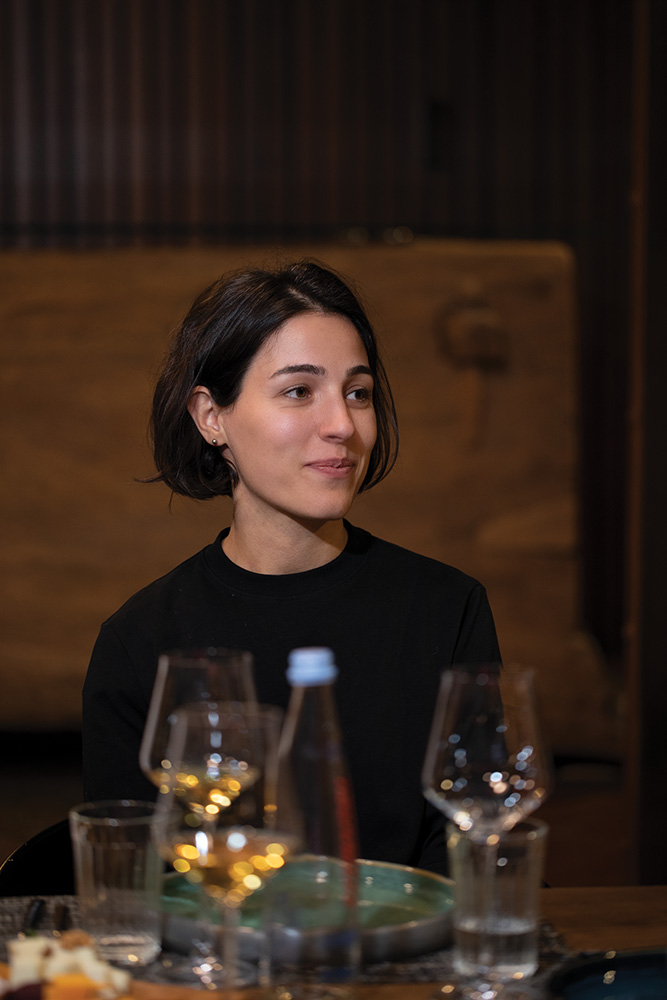
We also made rosé sparkling wines – Aladasturi rosé Pet-Nat, and dry red Pet-Nat from Otskhanuri Sapere that resembles Lambrusco.
It is not easy working with these two varieties that are not the earliest to ripen. There are years (ex. 2022) when ripeness is out of the question. Aladasturi is usually grown over a pergola, which delays the ripening process even further. But this growing technology allows for a bigger yield, with sugar content staying around 16-18. It is hard to make high-quality red wine from this yield, unless you dry it, which is hard for family wineries because the process requires special hygienic conditions. I am very happy to know that our region will soon have its laboratory – a crucial element for smaller wineries.
Irma Mdinaradze: Imereti had quite a peculiar variety back in the days, called “Samachre”. It was used to make young wine (machari in Georgian). I must also mention the white varieties, namely Kapistoni Tetri, which is best for making dry wines, as well as sparking ones. Piula, a French amphelograph wrote about this variety. He received 25 Georgian varieties, including Kapistoni Tetri from Baron Longale, the director of Adjameti agricultural school. This variety was well-studied in France for 10 years, which gave Piula the basis to recommend the variety to French viticulturists.
Mariam Khomasuridze: Written sources allow us to say that there was a tradition of fermenting red and white varieties together in the Imereti region. Locals also used a light press method to make rosé wines. I would like to see more experiments in this direction from modern Imeretian wineries.
Irma Mdinaradze: Rko Tetri is a very interesting variety. It should be studied to properly assess its potential. I can say the same about Tsirkvalis Tetri and other Imeretian varieties that can only be found in collection vineyards.
Keti Jurkhadze: I should also mention that another interesting project of our association is the publication of a separate manual on Imeretian varieties, which is led by Ms. Irma Mdinaradze. With her direct involvement, we will soon have a book that includes comprehensive information about the varieties of this region.
Tinatin Jajanidze | Director of the Wine Laboratory named after Irma Chanturia: The field of winemaking in Georgia is developing fast, and Imereti is actively contributing to this process.
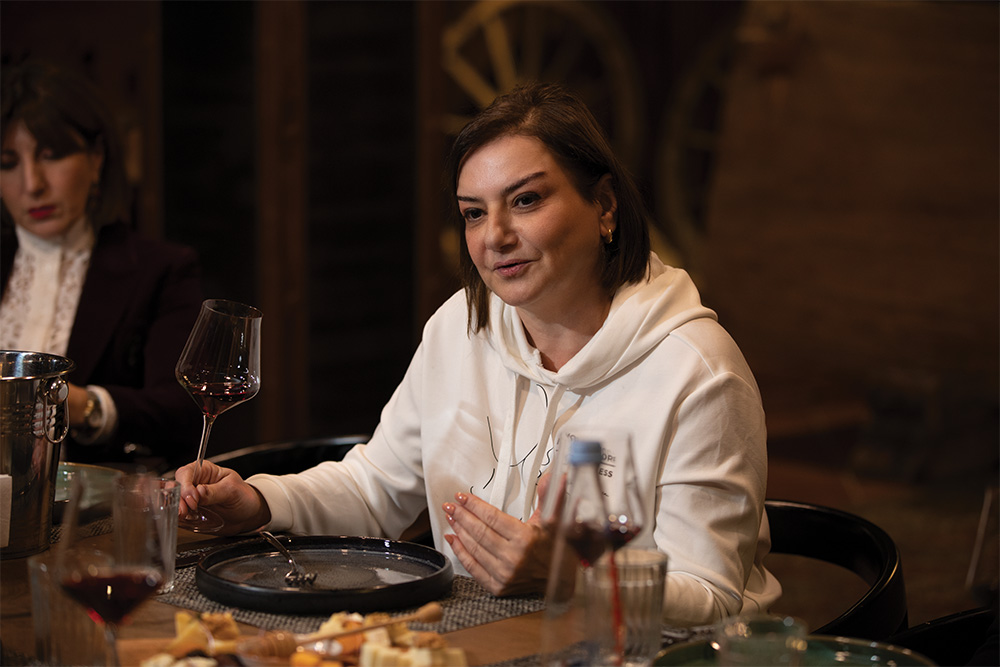
The Imeretian Wine Competition organized and held by the Imeretian Wine Association and the Wine Guild allowed the specialists of the field to dig deeper and see a clear picture of what innovations this region offers. The competition turned out to be a good motive for the winemakers themselves.
Mariam Khomasuridze: The competition held last year had two benefits: one – we highlighted, awarded, and thus gave more motivation to wineries producing high-quality wine. The second benefit was educational: to the entrepreneurs who did not receive high marks and medals, the “Wine Guild” offered free consultations, which, I think, will have a positive effect on their activities.
(Homeland of Wine was a supporter of the Imeretian Wine Competition. The results are presented as the top ten in the magazine’s summer 2022 issue).
Tinatin Jajanidze: We see clear progress in this region in terms of quality improvement in recent years. More and more Imeretian family wineries are coming into the light. Great hopes are placed on The Imeretian Wine Association as well, which is actively involved in the processes and is planning the implementation of various important projects. As Ms. Keti Jurkhadze mentioned, soon a wine laboratory will be located in the region, which we are working on jointly.
Mariam Khomasuridze: Why should the world markets be interested in Georgian wine? The first reason is history. We know that the history of the producing country as well as the winemaker adds a certain prestige to the wine. It is an important aspect of its awareness and pricing. The second reason is the varietal diversity. Georgian wines made from Georgian varieties have a new and different taste for the world market. Yes, we are entering this market with wines produced from completely different and distinctive varieties, which we have to present as a unique product. The third reason is traditional winemaking technologies. The more we observe and study them, the more we understand the wisdom our ancestors possessed. There was a reason to include stalks in the winemaking process in Kakheti. Today, we can chemically explain this reason: stalks ripen well in Kakheti. They are rich in phenolic compounds that keep the wine from oxidizing. They also prevent the wine from various microbiological diseases and aid the filtration. In Georgia, wine has historically always been a source of good income and was actively used in trade, so it had to be sustainable as a product. Of course, climatic conditions were also an important contributor. The Georgians used all of this wisely.
Now let’s move on to Imereti and the traditional winemaking techniques of this region, in which we frequently find the term “mother”. The Imeretians always added a part of chacha, which they called “mother”, to the grape juice. We know that yeast is localized on the skin of grapes; The substances necessary for yeast nutrition are localized on the skin, in the inner layers of the skin, and the layers close to the seed; Substances with varietal aromatic potential are also localized on the skin; The winemaker from Imereti knew this very well, that’s why he used to add a part of the chacha – or “mother” to the grape juice, thereby contributing to the start of fermentation, yeast multiplication, activation, and the enrichment of the wine’s aromatic potential. When we analyze this, we realize we are dealing with great wisdom. That’s why I say Imereti is a region where high-quality wines, or Fine Wines, corresponding to the world market can be produced.
Baia Abuladze: Modern research and solutions will bring the most benefit to our region, be it the studies of viticultural terroirs, or terroir wines. Today, when many wineries sell their wine on local or international markets, we face several challenges, the first and foremost of which is maintaining stable quality.
Our family winery has had many challenges – starting with growing a new vineyard, fighting pests, and powering through difficult years (low sugar content, heavy rainfall). However, there are many approaches – wire tying or trimming – that help many dryland regions like ours to work successfully with native varieties in organic viticulture and reduce fungal disease problems and risks. 2022 was probably the most difficult year for us, during which the experience that our foreign friends shared with us came in handy.
Varietal diversity is very important, and it will help promote small producers. Apart from the rare varieties, the main ones that our region is known for in the local and foreign markets still need a lot of support and research. For example, we grow Tsolikouri in different locations and we get different ripeness and, accordingly, different wines. This is what led us to produce sparkling wines from this variety. If the producers work harder to improve the viticulture practices in our region, we will get more interesting results in the form of quality wines.
As for the markets: for instance, the Norwegian market was an impregnable fortress for us. This is a country with high consumption of wine, high price segments, and very high competition, as the consumer has the opportunity to access the best wines from all over the world. In Norway, the awareness of Georgia was low and so was of our wine. For the last few years, we have been participating in various exhibitions held in this country, and the market is slowly opening up for us. Last year, not only consumers, but wine professionals were interested in the Georgian wine stand. I think, soon, Norway will become another interesting new market for Georgian wine.
Daduna Ghlonti | Brand chef. Co-founder of Gastronomic Tourism Business Association. First Georgian chef to join famous chefs united in The Global Information and Solutions Network for Sustainable Gastronomy: Today, Norway is leading the way in gastronomy with its innovative approaches. Restaurants in this country occupy top places among the best restaurants in the world. I think Georgian wines can greatly enhance the high-level gastronomy of Norway.
I think it is important, to better introduce our gastronomic culture to the world along with wine, because our country, with all its regions, including Imereti, has great potential. In the summer of 2022, we realized a joint project of DMO Imereti and the Gastronomic Tourism Business Association in this region. We created 12 videos on Imeretian gastronomy with the participation of famous Georgian chefs within its framework. We visited many villages and wineries and made amazing discoveries.
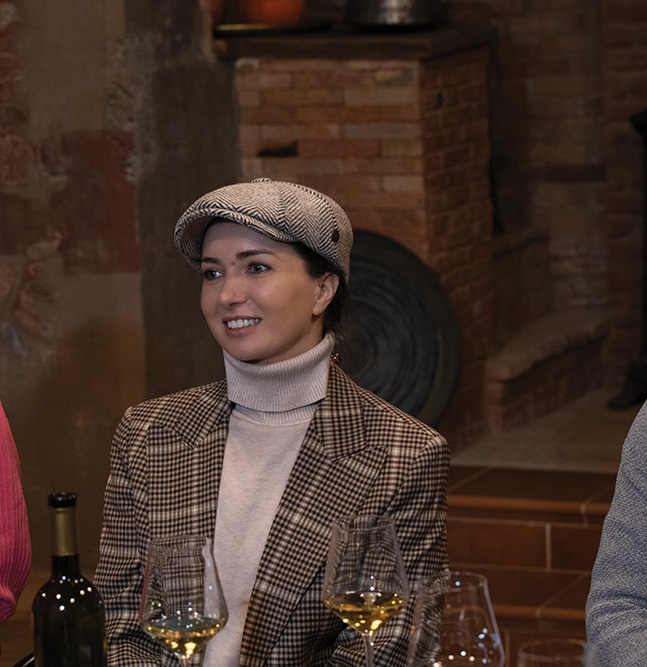
Authentic gastronomy is our biggest resource, and we have to protect it. Many tourists visit Georgia specifically for its traditional cuisine, but it doesn’t mean that we should not develop it further. I always participate in various festivals and events around the world and observe the trends put forward by leading chefs. If we look at the examples of other regions where wine and gastronomy develop together, we will get an interesting insight. Let’s take Turkey, for example, where I am in constant contact with leading specialists in the field of gastronomy. In November, Istanbul hosted the sixth international conference “Gastromasa 2022”, which united the leading specialists in the field, famous chefs, and sommeliers from different countries. The main topic was biodiversity in gastronomy. Within the framework of the same event, we once again saw very clearly what Turkey is doing to become even more popular in the areas of wine and gastronomy.
Georgia’s advantage is its centuries-old culture and traditions of both wine and gastronomy. All this should be properly “packaged” and presented to the world. We still have a lot of work ahead of us, as do the family wineries that host guests with local dishes. I think they especially have to protect the seasonality. I can always recommend wineries that offer seasonal cuisine to their guests. I am also very eager to help them have their signature gastronomic menu that cannot be duplicated anywhere else.
David Tsertsvadze | Founder of “Vartsikhe Marani”: These meetings and exchanges of ideas about wine, gastronomy, and gastro-tourism are very important because they give us more information about the direction we should take to develop our businesses. As you know, “Vartsikhe Marani” combines both winery and a tourist complex. We have been making wine for seven years, but just opened the complex last summer. Our goal is to make it the face of Imeretian culture. Everything that guests encounter on this territory is designed and built in the Imeretian style.
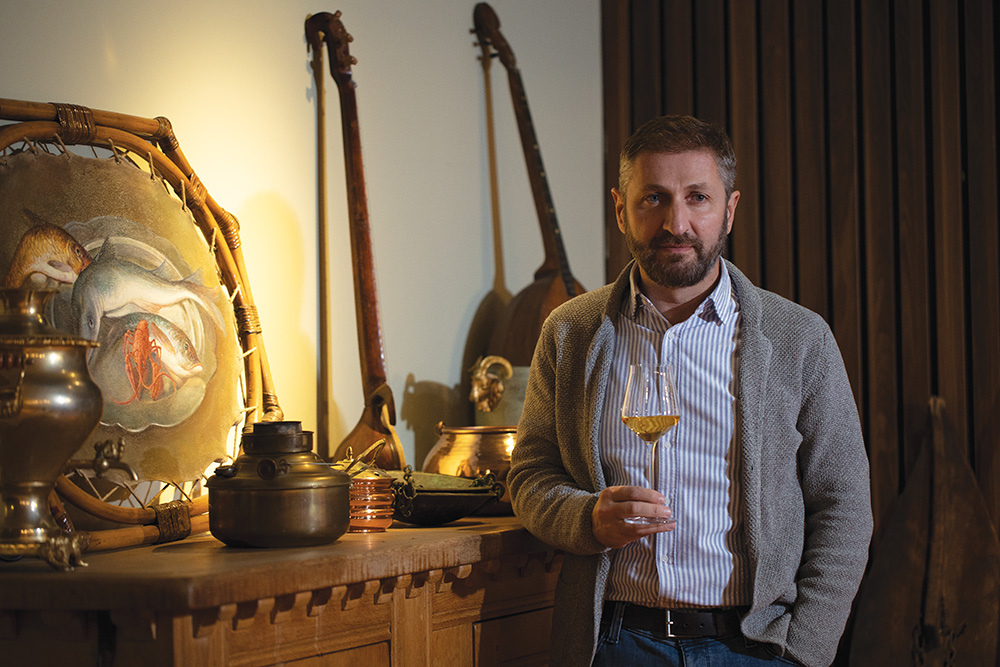
We have several types of wine, made with both Imeretian and Kakhetian varieties. We work a lot in Vartsikhe, on our territory, to plant new vineyards. We also have a farm. We constantly try to offer wine that the modern world market demands. We have many challenges – before we get our harvest from our newly planted vineyards, we have to buy grapes, which we take special care of. The fact that our wines have won many awards at various competitions, doesn’t mean that we should relax. We always try to do more and get better results.
At this stage, we have planted vineyards on 10 hectares. Among the varieties, we have Otskhanuri Sapere, Tsolikouri, Krakhuna, Aladasturi, and Dzelshavi. Shortly, we plan to increase the area of vineyards to 20 hectares.
We offer authentic Imeretian cuisine to our guests in the hotel complex. Our goal is to have our greenhouse, and garden, and develop our kitchen with a “garden to plate” concept. We are actively working in this direction and will think about the trends that Ms. Daduna spoke about.

